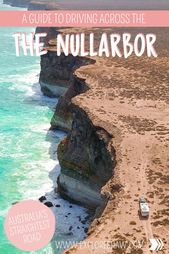We all know that drinking and driving is a combination of danger; driving under the influence is a cardinal sin of the road. We’ve listened to the warnings, we’ve read the statistics, we’ve watched the after-school specials. We know it’s a bad thing to do and yet, some of us do it anyway.
Unfortunately, those who drink and drive often go unpunished: they simply don’t get pulled over or noticed by law enforcement. But, those who do get pulled over, who cause an accident, or who are involved in any kind of automobile incident, often get noticed…in hand cuffs.
In the US, the punishment a person receives for drinking and driving is contingent on several factors. Included in this is the state where the offense occurred. While all 50 states have two statutory offenses – driving under the influence and driving with a blood alcohol level of at least .08 – some states charge people for driving with a blood alcohol level of .05. Some states also make it illegal to have open containers in an automobile, where some do not. Most US states take into account the level of intoxication as well as the number of offenses. Based on these factors, some people do jail time, some people lose their license, and some people get off with a fine.
Other countries have different laws than the US. Some are more lenient, and some are harsher. In Australia, the blood alcohol content is .05, and lower (.02) for those with learner’s permits or new drivers. The punishment for drinking and driving in Australia includes fines, suspension of license, imprisonment, and medical assessment before a driver’s license is reinstated.
In certain countries, drinking and driving is punishable by death. A first time offense in El Salvador leads to execution by firing squad, while a second offense in Bulgaria also leads to execution.
In France, drinking and driving is punishable by a 1,000 dollar fine, imprisonment for one year, and loss of license for three years. Finland and Sweden, along France’s lines, also automatically sentence drunk drivers to one year jail sentences including hard labor. In Norway, a drunk driver is jailed for three weeks with hard labor and loses their license for a year. If they do it again, they lose their license forever. In South Africa, drinking and driving results in a ten year prison sentence or a 10,000 fine and, in some cases, both.
In Canada, the first drinking and driving offense warrants loss of license for one year and a 600 dollars fine. The second offense warrants two weeks in jail and loss of license for two years. The third offense warrants three months in jail and loss of license for three years. After the fourth, they might just send you to America.
In England, a drunk driver pays a 250 dollar fine, spends a year in jail, and then loses their license for one year. In Russia, drunk drivers simply lose their license for life. Yes, even Russia has laws against drinking and driving.
Some countries are more creative in their attempts to keep the inebriated off the road. Turkey, for example, punishes drunk drivers by taking them 20 miles from their town and making them walk back with a police escort. In Poland, drunk drivers are subject to jail, fine, and, even worse, mandatory attendance at political lectures. In Malaya, if a man is caught driving drunk he is jailed. If he is married, his wife is jailed too. In Costa Rica, the license plates are removed immediately from the cars of those who drink and drive.
Drinking and driving can cost a lot of money, a lot of freedom, and, in worst cases, a lot of lives. In our world of available transportation drinking and driving has no place. Instead of driving drunk, simply take a bus, take a cab, take a subway, or rent a limo. I would say don’t even drink, but let’s aim for something more feasible.

